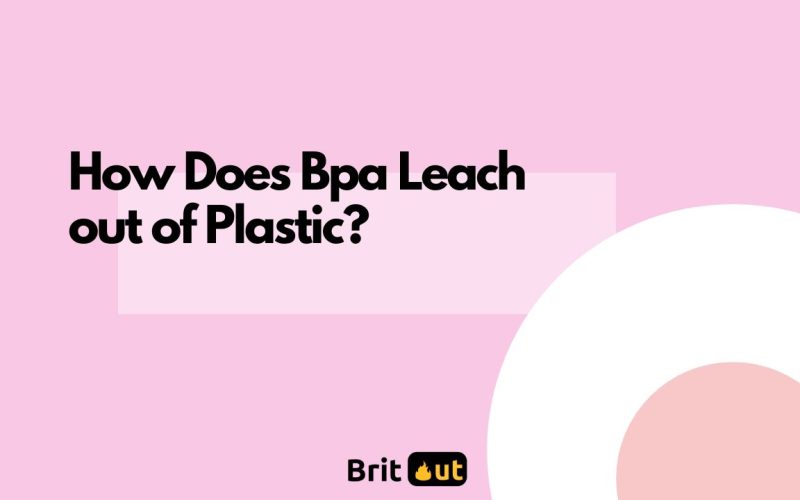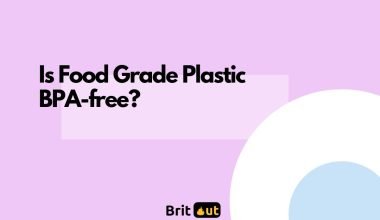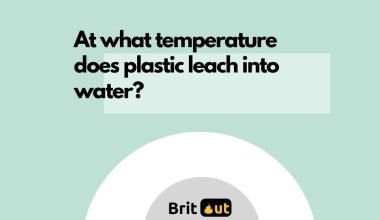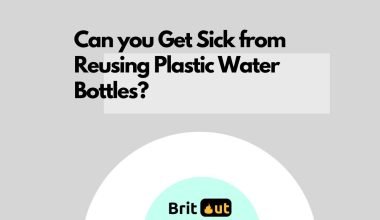Bisphenol A, or BPA, is a term that has grabbed headlines over the past few years. Used in everything from plastic water bottles to the linings of canned foods, this chemical compound has been linked to a range of potential health issues.
But how does BPA move from these products into our bodies and the environment? And how harmful is this process?
How Does Bpa Leach out of Plastic?
When we talk about BPA leaching out of plastic, what we’re really discussing is a process that happens on a microscopic level. This isn’t some big, dramatic event, but it’s just as impactful.
BPA, short for Bisphenol A, is an organic synthetic compound that’s used in creating certain plastics and resins.
You’ll find it in a wide range of products, from water bottles to the lining of canned foods. Now, under normal circumstances, BPA is locked in these materials, a part of the structure that gives plastics their strength and durability.
However, under certain conditions, BPA can start to break free from its plastic prison.
This is what we call ‘leaching’. Heat is a major culprit in this process. So, when you leave that plastic water bottle in your car on a sunny day, or when you reheat your leftovers in a plastic container, the increased temperature can cause BPA molecules to detach from the plastic and mix with the liquid inside.
Acidity is another factor that can speed up the leaching process. So if you’ve got something acidic in a container that contains BPA, like say, tomato sauce in a can, the BPA can leach out and into the sauce.
Let’s also not forget about wear and tear. The more a plastic item is used and washed, the more likely it is that BPA will start to leach out. This is why reusing plastics is not always a good idea.
Now, you might be thinking, “But it’s just a little bit, right?” True, the amounts of BPA that leach out are typically quite small. But even small amounts can accumulate over time, and this is where concerns about health effects come into play.
In the next section, we’ll look at how to tell when a plastic container contains BPA. But for now, the key takeaway is this: BPA leaching is a process driven by heat, acidity, and repeated use. And it’s through this process that BPA can move from your plastic products into your body.
How to tell when a Plastic Container Contains BPA
So, how do you know if a plastic product contains BPA? It’s one we get asked often. Here are a few tips to help you navigate this:
Let’s begin by talking about recycling codes.

You know those little triangle symbols on the bottom of your plastic containers? They’re not just for show.
Each number within the triangle corresponds to a different type of plastic. Plastics labeled with a “7” often contain BPA. However, not all plastics labeled “7” contain BPA, so it’s important not to make assumptions based solely on this number.
Here’s a table covering the recycles codes of plastic and whether they’re BPA free…
| Recycle Code | Common Name | BPA Free? | Can be Reused? | Common Uses |
|---|---|---|---|---|
| 1 | PET or PETE | Yes | Not recommended for reuse due to the risk of bacterial growth | Water and soft drink bottles, salad domes, fruit containers |
| 2 | HDPE | Yes | Yes, can be reused | Milk jugs, detergent bottles, grocery bags, yogurt tubs |
| 3 | PVC or V | Yes | Not recommended for reuse due to potential leaching of phthalates | Piping, siding, blister packs, wire jacketing |
| 4 | LDPE | Yes | Yes, can be reused | Bread bags, frozen food bags, squeezable bottles |
| 5 | PP | Yes | Yes, can be reused | Bottle caps, food containers, straws |
| 6 | PS | Yes | Not recommended for reuse due to potential leaching of styrene | Disposable plates and cups, meat trays, egg cartons, carry-out containers |
| 7 | Other | Often, but not always. This category can include polycarbonate, which contains BPA | Depends on the specific type of plastic | Baby bottles, some reusable water bottles, some metal can linings |
Secondly, many manufacturers now label their products as “BPA-free” if they do not contain the chemical.
If you see this label, it’s a good indication that the product is BPA-free. But, just like the recycling codes, this isn’t foolproof. Some manufacturers may use BPA substitutes that could also have potential health effects.
And, when in doubt, do your research.
Many manufacturers now have information about their use of BPA available on their websites. And if you can’t find the information you’re looking for, don’t be afraid to reach out to the manufacturer directly. They should be able to provide you with the information you need.
For instance, this is Eastman.com, a well-known plastic company, explicitly making note that their plastics are BPA-free…

Tips to Avoid or Reduce BPA Exposure
Obviously, BPA is not an exciting thing to hear, especially if you’re like most people — who use plastic for basically everything. But then, how can you avoid the effect or exposure of BPA?
Switch to other alternatives
One of the simplest things you can do is to switch from plastic to glass or stainless steel for food and drink storage. Not only do these materials not contain BPA, but they’re also durable and reusable, which is a win for the environment too.
Avoid using Plastic Heat
Remember how we discussed that heat can cause BPA to leach out of plastic? Well, that gives us a clear action point: avoid microwaving food in plastic containers. Instead, transfer your food to a ceramic or glass dish before warming it up.
Now, there might be some plastics that are good with heating, but they’re better avoided, especially when you’re in dire need to avoid BPA exposure.
Avoid Canned Foods
When it comes to canned goods, try to opt for fresh or frozen alternatives when possible. If you do buy canned foods, look for brands that advertise a BPA-free lining.
Lastly, wash your hands after handling receipts, especially before eating or preparing food. Receipts are a less-known source of BPA, but they can contribute to your overall exposure.
Final Thoughts
To mitigate the leaching of BPA, it is essential to explore alternative materials and manufacturing processes that eliminate or reduce the presence of BPA in plastic products.
Additionally, proper storage and handling practices, including avoiding exposure to high temperatures and acidic environments, can help minimize the release of BPA into our surroundings






